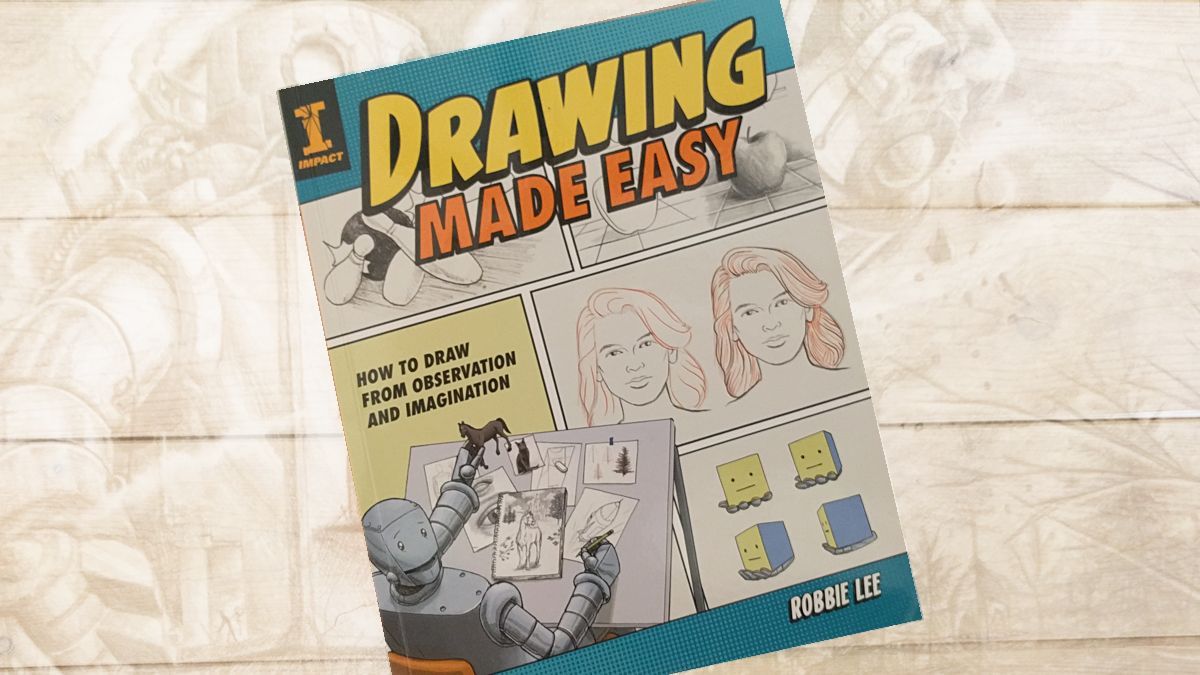If you’ve spent any time scrolling through the vast world of internet T-shirts, you’ve likely seen the work of Robbie Lee. He’s designed some of my favorite T-shirts, like “Squeeze,” the fan-favorite “Shhhhhh,” and—my personal favorite—”C’mon! Let’s Bake a Cake.”
If geeky T-shirts are your thing, be sure to check out his entire gallery at Shirt.Woot.
But Robbie Lee, T-shirt artist, is also Robbie Lee, art teacher, and Robbie Lee, author. In addition to teaching visual arts to middle school students for fifteen years, he’s written two books about drawing and illustration, Perspective Made Easy (which has been previously featured on GeekDad), and his latest book, Drawing Made Easy: How to Draw from Observation and Imagination.
Drawing With a Growth Mindset
Drawing Made Easy starts off with a brief introduction about the fixed versus growth mindset—the cognitive development concept from Stanford Professor Carol Dweck. In short, the idea is people with a fixed mindset feel that talent is natural—you’re either good at something or you’re not. According to Dweck, this can stifle creativity and personal development. Conversely, a growth mindset allows people to get better at a task or skill through effort and learning. The idea, as it pertains to art, is that anyone can learn to draw—and get better at it—through instruction and by putting in the effort.
Lee even includes an example from his own experience—how his popular Shirt.Woot design, Fat Unicorn, came from his failed (by his account) efforts to draw a realistic horse.

But, determined to get better at drawing horses, he sat down and spent a summer learning to draw them better. Now, he says, he can draw a respectable horse from imagination. As a person who once loved to draw but stopped at some point in high school because of discouragement and self-doubt, I found this introduction to be very inspiring.
Learning to Draw in Six Easy Chapters
Drawing Made Easy is comprised of six chapters: The Drawing Process, Finishing a Drawing, Drawing from Observation, Drawing People, Perspective, and Drawing Scenes. As a whole, the chapters lead the reader along a path of natural progression from learning the basics, through developing skills, to tackling more complex challenges like drawing people and entire scenes.

In each chapter, we’re introduced to the different concepts by a friendly robot guide (Robbie draws great robots), that provides the reader with clear, concise explanations about what will be presented in the upcoming pages.

This robot stays with us through the entirety of each chapter, offering tips and suggestions on how to execute some of the techniques Lee writes about. For instance, in Chapter 3: Drawing from Observation, we’re guided through a number of different techniques to transfer what we see in real life to the page, such as using a drawing frame.

I’m sure the drawing frame is a tried-and-true drawing trick, but I’d never seen it before. For me, this was quite a revelation, and one explained simply and succinctly. Many of the explanation pages like this, taken by themselves, are also great examples of how to use illustration to tell a story.
In addition to offering overviews of different skills, Lee takes the time to explain many techniques in-depth. These are usually presented as step-by-step instructions with easy-to-follow examples that the reader can try to replicate. (I, personally, had limited success with some, but I’ll continue working on it.) Unlike other drawing books I’ve seen, Lee really makes an effort to explain the subtle nuances in the different steps of these explainers, especially with something as delicate as shading.

The pages of the book are filled with numerous valuable drawing shortcuts that not only speed up the drawing process but can also improve a budding artist’s technique. For instance, I found Lee’s take on how to quickly draw realistic wood grain brilliant in its simplicity.
Drawing Made Easy is a great book for artists of all skill levels. It’s designed in a comic book-like fashion, and this, along with the friendly tone and thorough instructions, makes it easy to follow. The early chapters are ideal for anyone who wants to learn how to draw, and the later sections offer instruction on creating more complicated illustrations, like drawing people and telling a story with an entire scene. I think veteran illustrators will even find value in some of the interesting and time-saving tricks from the first few chapters.
Drawing Made Easy: How to Draw from Observation and Imagination by Robbie Lee is available from Amazon, Barnes & Noble, IndieBound, and anywhere else art books are sold.
Drawing Made Easy is published by Impact Books. I was provided a free copy for review purposes. Unless otherwise noted photos were taken by me. Photos of the book are reproduced here with permission.



